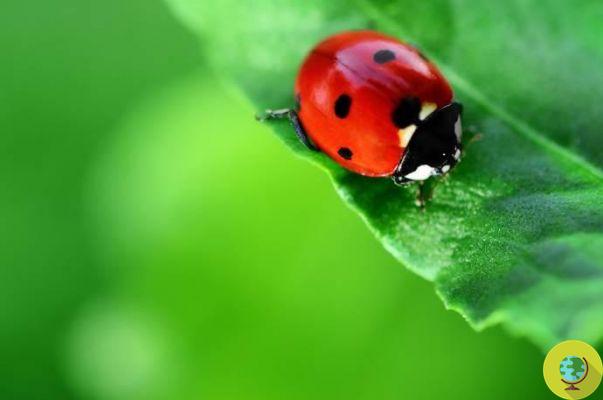
Mosquitoes are fine, but unfortunately the same cannot be said of ladybugs that together with bees, moths, butterflies, fireflies and midges, all very useful insects for the balance of the ecosystem, are decreasing drastically and the fault is pollution, climate change and more.
He is about to end up run over, his mother saves him
Mosquitoes are fine, but unfortunately the same cannot be said of ladybugs that together with bees, moths, butterflies, fireflies and midges, all very useful insects for the balance of the ecosystem, are decreasing drastically and the fault is pollution, climate change and more.
Something is wrong and we have known this for some time: there are fewer and fewer non-infesting insects and the survival of the planet is at risk given their key role they play in pollination and in the food chain.
“We are witnessing a total collapse of the ecosystem. What's worse than that? ”Explains University of Delaware entomologist Doug Tallamy.
Research shows the decline of individual species in specific places, from 1987 to 2006 there would be a 14% decline in ladybugs in the United States and Canada, which may seem low, in reality it is not.
Entomologists from the University of Florida and Costa Rica sound the alarm, last year another study found an 82% drop in the number of insects captured (and then released) in 63 nature reserves in Germany.
"We don't know exactly how much we're losing if we don't know how much we have, so through these experiments we try to quantify the population," says University of Hawaii entomologist Helen Spafford.
Ladybugs, for example, are garden-friendly insects. It is no coincidence that the ladybird was elected as a true symbol of organic agriculture, which includes among its main rules the prohibition of using pesticides that are harmful to the environment. This beautiful insect contributes to the biological fight against garden parasites.
There are still bees, responsible for the pollination of at least 95 species of fruit and vegetables that contribute significantly to many other varieties: therefore, in fact, it is from them that the reproduction of the plant world derives and this allows us, for example , to breathe, given the enormous contribution to the oxygen exchange that derives from the chlorophyll photosynthesis of plants.
And again the beautiful fireflies and midges. All non-pest insects that are now in danger of disappearing and about the direct culprits, scientists have no doubts: insecticides, increase in light and road traffic and climate change.
Read also:
- Biological fight: how to attract ladybugs and beneficial insects to the vegetable garden
- Bees die-off: shock study shows that common fungicides (also) cause it
Dominella Trunfio


























